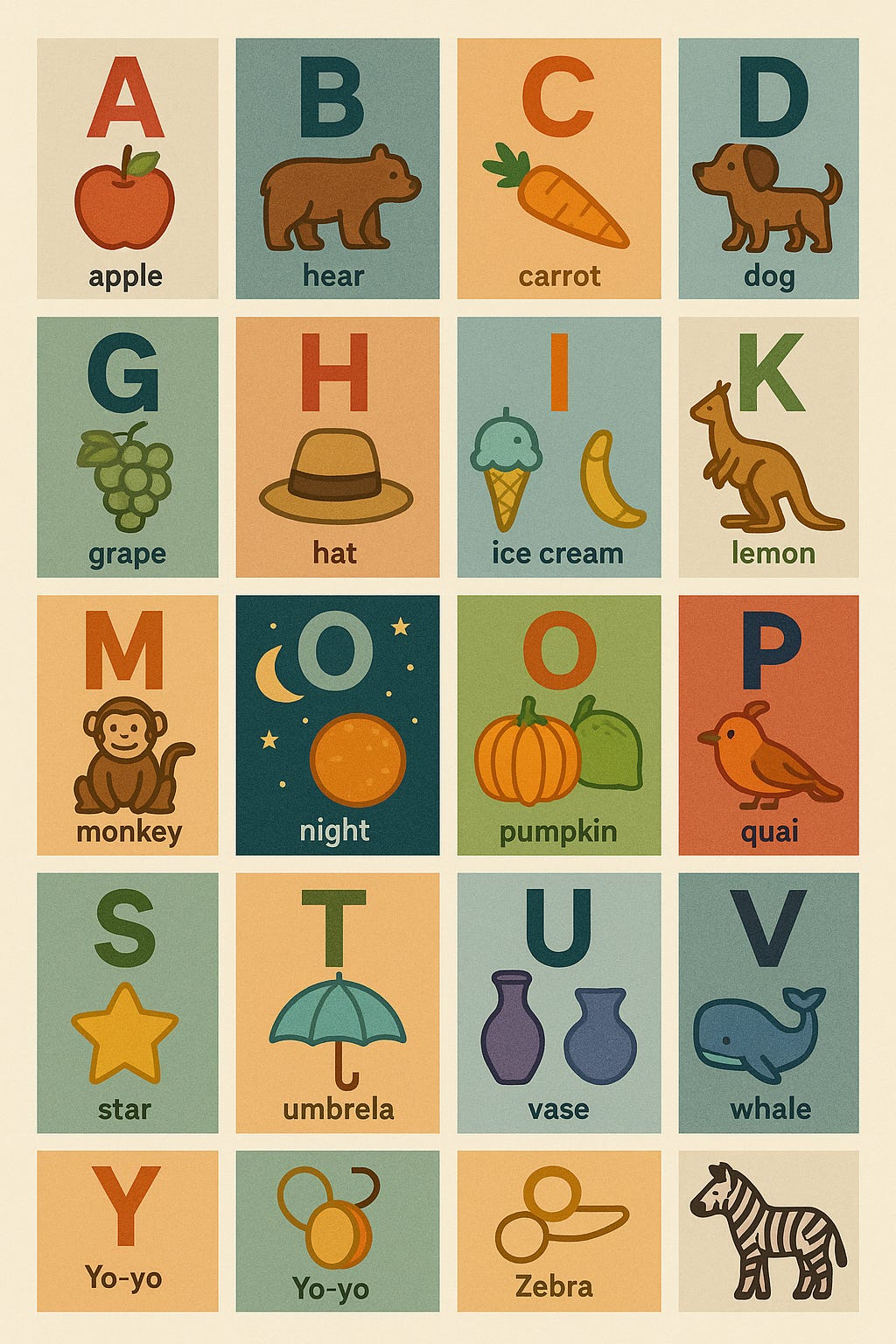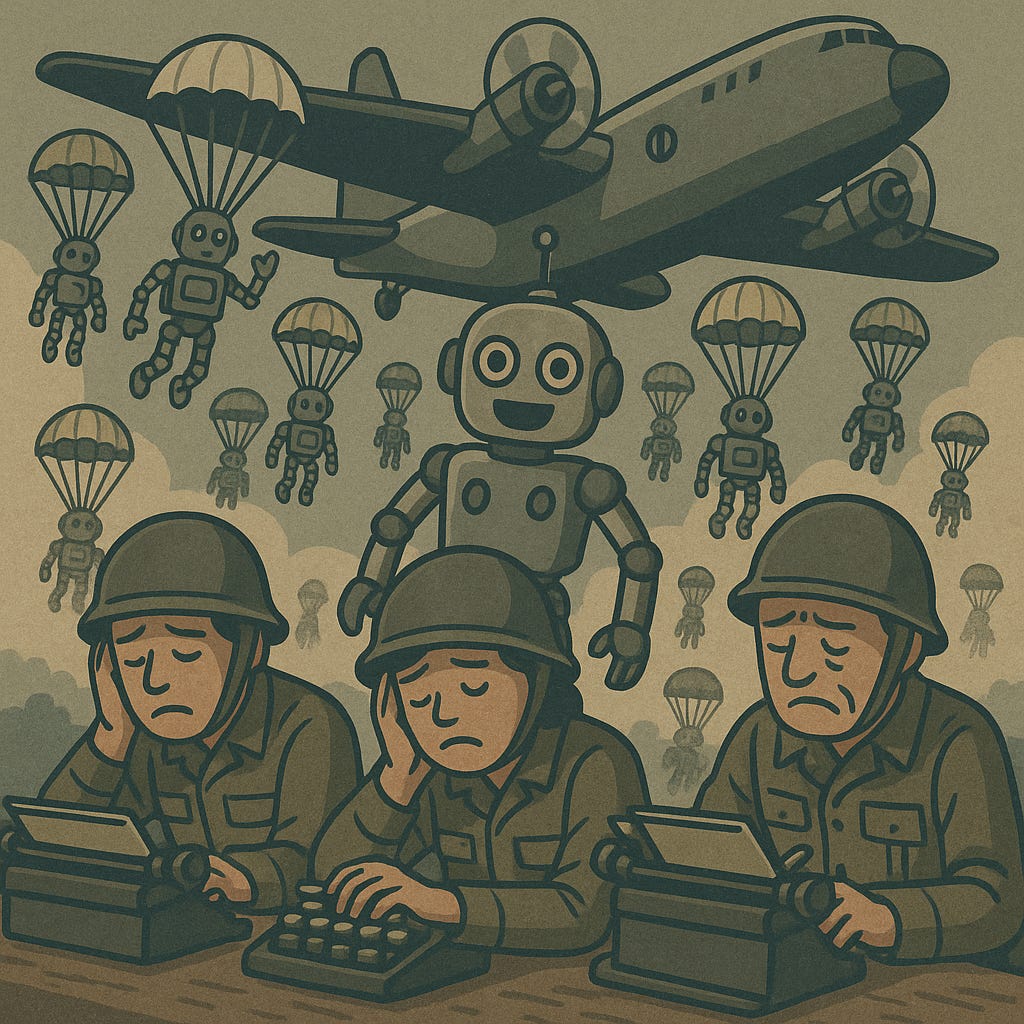AI May Be the Answer to Overwork, But When?
It's pointed to as a solution for many professional ills, but today these solves feel more hypothetical than empirical.
There’s no way around it: workload is increasing at a pace far beyond budgets and headcount for most white collar firms. The post-Covid job hopping that drove labor market leverage towards the actual labor has realigned firmly back towards the capital employing that labor.
The services industry is feeling this acutely: on top of a race to the bottom for new business, existing clients are utilizing their leverage to continue to drive a “more for less” approach. But it’s not entirely malicious - the rise of the prospect of artificial intelligence and its effect on how we work has made many promises about the ability to do said more with said less, at the speed of LLMs. But if we take a moment to look at where we’ve landed thus far, the reality is that we seem to be getting ahead of ourselves when it comes to AI-driven efficiency at work.
Welcome to the Infinite Workday
If you feel like your workday is bleeding into the entirety of your waking hours, you’re not alone. Data from Microsoft and their suite of office tools shows that from the moment we wake up to the time when we collapse in bed from another exhausting day driving shareholder value in our late-stage capitalist world, we are connected to our jobs.
There are a couple drivers of this. The first is out-of-control meeting culture. The second is the devices that were promised to liberate us from ignorance have, in fact, enslaved us to a pair of masters: our work from a professional aspect on one side and outlandish antics, outrage culture, and fake life we commonly refer to as social media when we’re off the clock.
Because of this, even when we’re “off,” we’re never really off. This leads to burnout and anxiety, which, outside of the health issues that come along with that, also degrades our work performance.
There are only so many hours in the day to get work done, and the PSI in the pressure cooker that we call the services sector has been steadily rising. But there has been a new technology that has been hailed as our savior when it comes to efficiency.
All Hail AI
Before we begin bashing AI, let’s clear the air on the fact that the technology we have seen from the AI world is nothing short of astounding. Using OpenAI as an example, the leaps and bounds their models have made over the years is breathtaking. And consumers and business leaders alike have been looking for ways to drive efficiency in their lives. Rishad Tobaccowala is right in that it would be hard to overhype AI.
But let’s also be clear about AI’s shortcomings. It is running out of data. It is riddled with security puzzles not yet solved. It is manipulating human behavior. I suppose every rose has its thorn(s).
So while AI’s possibilities seem endless (and may very well be), there is an aspect of it that we are rushing: the timelines in which we will see its benefits. And while Prof G is right that AI gains are driving an already oversold market even higher, this newsletter views that as yet another symptom of the larger hype disease.
A bigger concern is the hailing of AI as the savior to our never-ending workday. The Microsoft study showing that we’re way too online in the Office 365 world concludes that AI is a huge piece of the puzzle when it comes to solving this overwork, but this newsletter has doubts.
ChatGPT 5.0 as a Canary in the Coal Mine
The recent rollout of OpenAI’s newest consumer LLM in ChatGPT 5.0 is indicative of larger headwinds that the AI as a work/life balance alleviator movement will hit in the coming months and quarters.
Those leaps and bounds we’ve become accustomed to between model releases with companies like OpenAI have significantly slowed. This newsletter foresaw this back in September of 2024, as the data spigot for training these models was beginning to decrease dramatically.
So how do the existing models compare to your average entry-level employee? From experience, pretty poorly. The models require a lot of context to do very simple tasks, and even then they still tend to fall short.
In this newsletter’s last post I tried to get a model to make a picture for every letter of the alphabet. This is a very simple task that the most inexperienced individual coming into a job at an agency would be able to accomplish. The model failed.
I have heard other stories of people smarter with prompting models than myself trying similar experiments and seeing the model fail in spectacular fashion. (Ed.’s note: It is this newsletter’s policy that we do not out executives who associate with the author, for fear of bringing shame on their name and profession. Just know, they exist - we swear.)
The Other Constraints
Suspending disbelief for a moment, let’s pretend every AI breakthrough now and in the future will be groundbreaking. Let’s pretend we had AGI right now (which, for the record, we are at the very least years, if not decades, away from), there are other constraints that limit AI’s breadth and depth.
One of these is usage permissions. Very often, internal conversations are recorded for Copilot notes, but when it comes to cross-organizational meetings (outside agencies, clients, vendors), many times I hear “We’re not allowed.” It makes sense, but it also removes a big advantage of the AI built into these conference tools, especially for long meetings or workshops where we want the focus to be on collaboration and engagement, not manual note-taking.
There’s also another constraint we saw with the ChatGPT 5.0 rollout - users are currently limited to 200 questions a week on the new model due to the insane compute and energy required to run these models. Companies like OpenAI know there’s not enough energy on the planet to power these models given projected growth. Limits like these will eventually hit commercial licenses for those without unlimited budgets, as AI adoption in the business world will continue to grow.
Which begs the question - if we currently are limited by both model ability and energy stores, is leaning into AI as the overwork savior and employee replacement the move? Sure, human employees take sick days and PTO, but I’ve never had one say to me, “Sorry, I just don’t have the energy for that right now. Check back in 314 hours.” And to be honest, if they did, they would be fired and replaced with that kind of attitude towards work - an option that isn’t really there between man and machine if there is physically no energy to drive a query.
So while jobs will be replaced by AI - now and in the future - the larger question remains of how effective the AI will be in the replaced job and how much it can move the needle on the never-ending workday. A lot of promises about the immediate efficacy of AI are being made, but when you break it down, it happens to be those with significant financial interest in AI’s utility that are the ones seemingly willing it to be true.
While this would not be a huge problem (innovation is what drives the American economy, and the “Move fast and break things” ethos actually has some value), the short-term aspect of overwork is (at least partially) built on a foundation that reinforcements are coming, in the form of AI.
The debate here is not if AI will help us be more productive at work and potentially help with the existing work/life balance crisis making its way across the professional services industry, but when it will. This newsletter is here to posit that reinforcements are still in the recruitment and basic training stage, not on the transport plane with arrival at the front imminent.
Therefore, we need to reevaluate our strategy of overloading our human workers with the idea that we can remove some of that workload via AI as opposed to additional human headcount. It’s a risky bet in the short term that does not have a potential payoff for years to come. Especially if we need someone who fully comprehends that “A is for Apple” all the way through “Z is for Zebra.”
Grab Bag Sections
WTF Service Sector Shrinkflation: The WSJ had an excellent rundown of how hotel operators are looking to squeeze as much profit out of their rooms as possible - at the expense of the guest, naturally. While I ranted about this on LinkedIn, I want to expand the frustration from a move like this.
This is basically just shrinkflation being applied to the hospitality industry. And the most infuriating part is that the consumer has almost no say in this, as the move is being done across a variety of chains in the vertical. As soon as one operator or brand does a cost-saving move that consumers simply accept without shifting spend, every other competitor follows suit.
An excellent example of this is airline bag fees. You know how everyone bum rushes the plane regardless of their boarding group to try to get overhead space for their bags? I’m old enough to remember a time when checking a bag only cost you the tip you gave to the skycap because you were running late because the Sumner was a disaster (as usual.) It made the boarding process slightly less hectic.
With assigned seating, it should not matter when you board your flight. But thanks to the constant nickel-and-diming of consumers, airline bag fees now constitute $7+ BILLION in revenue for airlines. This was, of course, given a huge assist thanks to assinine security rules that don’t actually make us safer but are quite effective at inconveniencing us.
The saddest part is that consumers don’t really have a choice - continuing the baggage fee example, just look at consolidation in the American airline industry. We went from over 45 airlines to just 5 majors since the 1960s. It’s much easier to get ahead of the consumer when choice is that constrained.
Until there is a groundswell of consumer opposition via shifting spend (or - gasp - not spending) this kind of shrinkflation within the services sector will not only continue, but likely accelerate. So buckle up for even more fare add-ons for your flight, where you’re squeezed in more and more every year like cattle, only to show up to your tiny hotel room where anything resembling a creature comfort is down in the lobby - for an extra fee, of course.
Album of the Week: We covered her sophomore album last year, so let’s dive into her debut album Lost and Found - a highly raw, emotional set of tracks from a young Smith, who wrote the songs over a period of five years beginning when she was 16.
Given that, you might expect some of the album to feel superficial or saccharine. But the reality is that for a first album from a teenager, the material feels much beyond Smith’s limited years. Take “Teenage Fantasy” - one of the best tracks on the album - having a choral dichotomy that perfectly describes commitment issues of those just coming into relationship maturity.
Other highlights on the album include the longing on “February 3rd,” a quality break-up song in “On Your Own,” the memories of lost ones in “Goodbyes,” and some painful self-realization in “Tomorrow.”
You’d be wise to familiarize yourself with Smith’s catalogue and her debut is an excellent place to start. She tends to put out projects every 2-3 years and her last album - falling or flying - dropped in 2023, so give this one a spin to be ready for the next up.
Quote of the Week: “Leisure is only possible when we are at one with ourselves. We tend to overwork as a means of self-escape, as a way of trying to justify our existence.” - Josef Pieper
AI Usage in This Post
Other than the images, the only other AI usage for this post occurred when I was in a time crunch and wanted a quick rundown of the MIT Technology Review article on artificial intelligence’s energy expenditure. A bit ironic, innit?
See you in two weeks!








